This Week In Business
Print’s not dead. How Hearst is using social to power-up its papers.
Analizo launches Europe's first algorithm-as-a-service, bringing robo-investing capabilities to the wealth management industry
Applegreen wins prestigious European SME Award
Mimaki Tx300P-1800 already proving a Fashionable Choice
Irish Stock Market
Applegreen wins prestigious European SME Award
Star of 2016 award won by Applegreen Applegreen, the #1 motorway service area operator in…Irish Stock Exchange Quarterly Statistics Q3 2016
Q3 2016 statistics show over 35,000 securities listed on Irish Stock Exchange markets…ISE shows growth
Irish Stock Exchange listing figures grow to over 35,000 securities Quarterly statistics…Irish Stock exchange extends to 28 companies
Dalata Hotel Group joins the ISE’s Main Securities Market Dalata Hotel Group (Dalata),…#IPOready companies graduate from ISE leadership programme
High-potential companies have graduated from #IPOready #IPOready is the Irish Stock…Quarterly Statistics - Irish Stock Exchange
Q1 2016 statistics show 34,382 securities listed on ISE markets. Main headlines: Listings…ISE The Place To Be!
Irish Stock Exchange wins No.1 slot in Great Place to Work Awards. Would you like a great…Venn Life Sciences Joins The ESM
Adding a euro quotation for investors. Venn Life Sciences, the growing Contract Research…
World Economy
Print’s not dead. How Hearst is using social to power-up its papers.
The Newspaper business is dead? Don’t tell that to Hearst. By Brett Lofgren | September…Press Release From ISE
ISE and NASDAQ OMX announce intention to bring Dual ISE/US Market Access to Irish…Sappi First-Quarter Profit Falls
Company says result is due to paper and pulp price decline. Sappi Ltd., the world’s…How global manufacturing is changing.
Ireland is changing and the savvy business has to be aware of changing global trends.3D…High Consumption Foodstuffs in DRC:
High Consumption Foodstuffs in DRC: Where Are the Surpluses and Deficits? By Dr…Xerox wins print contract for UK Government
Xerox to deliver cost efficiencies in print services to UK public sector The UK Cabinet…Disposable income drops
New figures just released show that household disposable income in Ireland fell by 0.4…Ireland’s richest 300 worth €62bn
The 300 richest people in Ireland are now worth more than €62bn. The figure is staggering…
Business & Finance
Applegreen wins prestigious European SME Award
Irish Stock Exchange Quarterly Statistics Q3 2016
ISE shows growth
Irish Stock exchange extends to 28 companies
#IPOready companies graduate from ISE leadership programme
Quarterly Statistics - Irish Stock Exchange
World Stock Market
Hans‐Ole Jochumsen re‐elected as FESE President
Euro rates fixed – but for how long?
GLOBAL STOCKS and COMMODITIES
Snapshot of Irish shares and European stocks over Christmas
Markets surge on Central Banks' intervention
U.S. Stocks Update Wednesday 23rd November 2011
Economy, Tenders & Invenstment
Prior information notice of tender.
Tender Opportunity Here at DPNlive, we are always looking for business opportunities for…Print tenders
Want to do the printing for the Houses of the Oireachtas? Below is a table of three…
- Details
- Written by Administrator
- Parent Category: Business and Finance
- Category: World Economic Updates
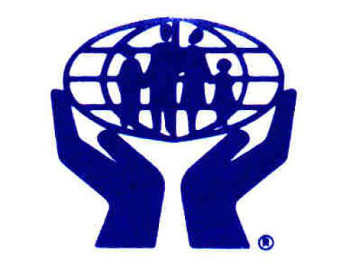
The Irish Government has announced that it is prepared to pump almost €1bn into some Credit Unions which are “on the brink”.
The move is being made to strengthen the balance sheets of nearly 20 of the countries 400 credit unions which are in serious financial difficulties at present. This is nearly 25% of the 79 credit unions which are currently experiencing serious financial difficulties at present.
Minister for Finance Michael Noonan said;
“Some Individual credit unions have problems that are coming down the road quickly,” he said. “The central bank had requested that it urgently be given extra powers to deal with these institutions “which are on the brink”. I seriously intend sorting out credit unions and some of them we’ll have to do immediately.”
Although it appears that the majority of credit unions are healthy those that are experiencing financial difficulties have sought financial aid from a fund set up by the Irish League of Credit Unions.
The statistics are there for everyone to see. At present almost €1bn of loans across the States credit unions are in arrears for 10 weeks or more. This represents 18% of the total €5.2bn loan book in the country.
- Details
- Written by Administrator
- Parent Category: Business and Finance
- Category: World Economic Updates
Bob Tallent
The Synergy Group
According to Forbes, the top 10 countries to do business with are as follows:
1. Canada – up from 4th last year.
It has a population of 34 million, GDP growth of 3.1% and 39,400 per capita. It has shown impressive growth of the manufacturing, mining, and service sectors that has transformed the nation from a largely rural economy into one primarily industrial and urban
2. New Zealand – up from 2nd last year.
Its population is similar to Ireland at 4.3 million, GDP growth of 1.5% and 27,700 per capita. Over the past 20 years its government has transformed New Zealand from an agricultural economy to a more industrialised, free market economy that can compete globally. Inflationary pressures caused the central bank to raise its key rate steadily from January 2004 until it was among the highest in the OECD in 2007-08. The economy fell into recession before the start of the global financial crisis and contracted for five consecutive quarters in 2008-09. The economy displayed a 1.7% decline in 2009, but pulled out of recession late in the year, and achieved 2.1% growth in 2010.
3. Hong Kong – down from 2nd last year.
Its population is 7.1 million, GDP growth of 6.8% and 45,900 per capita. It is a free market economy dependent on international trade and finance. The mainland has long been Hong Kong's largest trading partner, accounting for about half of Hong Kong's exports by value. Hong Kong's natural resources are limited, and food and raw materials must be imported. As a result of China's easing of travel restrictions, the number of mainland tourists to the territory has risen from 4.5 million in 2001 to 22.5 million in 2010. During the past 10 years, its service industry has grown rapidly while its manufacturing industry moved to the mainland, and in 2009 accounted for more than 90% of the territory's GDP. GDP growth averaged a strong 3.8% from 1989 to 2010. Hong Kong's GDP fell in 2009 as a result of the global financial crisis, but a recovery began in third quarter 2009, and the economy grew nearly 6.8% in 2010.
4. Ireland – down from 6th last year.
Its population is 4.7 million, GDP growth of -1.0% and 37,300 per capita. One of the initial 12 EU countries and had GDP growth of 6% between 1995-2007, 3% in 2008, 8% in 2009 and 1% in 2010. In 2008, Ireland fell into a recession. Its previous recessions were in the 1980’s and then 1990’s. Property prices in Ireland prior to 2007 rose more sharply than in any other developed economy and have since fallen by 50% or more. Industry and services has taken over from agriculture as prominent sectors. In 2010, the budget deficit reached 32.4% of GDP - the world's largest deficit, as a percentage of GDP - because of additional government support for the banking sector. In late 2010, the Government agreed to a €85 billion loan package from the EU and IMF to help further increase the capitalisation of its banking sector and avoid defaulting on its sovereign debt. The government also initiated a four-year austerity plan to cut an additional €15 billion from its budget.
5. Denmark – down from 1st last year.
Its population is 5.5 million, GDP growth of 2.1% and 36,600 per capita. A modern market economy that features a high-tech agricultural sector, state-of-the-art industry with world-leading firms in pharmaceuticals, maritime shipping and renewable energy, and a high dependence on foreign trade. It has a high standard of living and the economy is symbolised by extensive government welfare measures and an equitable distribution of income. It has a comfortable balance of payments. Like Ireland, Denmark's economy began slowing in 2007 with the end of a housing boom. Housing prices dropped markedly in 2008-09. The global financial crisis has exacerbated this slowdown through increased borrowing costs and lower export demand, consumer confidence, and investment. Unemployment is low at 7.4%, compared to an EU average of 10.1%
6. Singapore – up from 7th last year.
Its population is 4.7 million, GDP growth of 14.5% and 62,100 per capita. It has a highly developed and successful free-market economy which depends heavily on exports, particularly in consumer electronics, information technology products, pharmaceuticals, and on a growing financial services sector. Real GDP growth averaged 7.1% between 2004 and 2007. The economy contracted 1.3% in 2009 as a result of the global financial crisis, but rebounded nearly 14.7% in 2010, on the strength of renewed exports.
7. Sweden – same as last year.
Its population is 9.1 million, GDP growth of 5.5% and 39,100 per capita. Sweden is not a member of the EU as a result of a vote in 2003. For the whole of the 20th century, it was a neutral country and achieved a privileged standard of living as a result of hi tech capitalism and good welfare benefits. It is dependent on foreign trade with timber, hydropower and iron ore being main components. Privately owned firms account for about 90% of industrial output, of which the engineering sector accounts for 50% of output and exports. Agriculture accounts for little more than 1% of GDP and of employment. The Swedish economy moved into recession in the third quarter of 2008 and growth continued downward in 2009 as deteriorating global conditions reduced export demand and consumption. Strong exports of commodities and a return to profitability by Sweden's banking sector drove the strong rebound in 2010.
8. Norway – same as last year.
Its population is 4.7 million, GDP growth of 0.4% and 54,600 per capita. Norway is not part of the EU as a result of a vote in 1994. The country is rich in natural resources - petroleum, hydropower, fish, forests, and minerals - and is highly dependent on the petroleum sector, which accounts for nearly half of exports and over 30% of state revenue. While Norway has slipped to 9th position as an oil exporter, it is second-largest gas exporter. Norway saves state revenue from the petroleum sector in the world's second largest sovereign wealth fund, valued at over $500 billion in 2010. After solid GDP growth in 2004-07, the economy slowed in 2008, and contracted in 2009, before returning to positive growth in 2010.
9. United Kingdom – up from 10th last year.
Its population is 62.7 million, GDP growth of 1.3% and 34,800 per capita. After Germany & France, it is the 3rd largest economy in Europe. Relative to EU standards agriculture is intensive, efficient and highly mechanised, producing about 60% of food needs with less than 2% of the labour force. Even though it has large coal, natural gas, and oil resources, its oil and natural gas reserves are declining and the UK became a net importer of energy in 2005. In 2008, the global financial crisis hit the economy particularly hard, due to the importance of its financial sector. Sharply declining home prices, high consumer debt, and the global economic slowdown compounded Britain's economic problems, pushing the economy into recession in the latter half of 2008.
10. United States – down from 9th last year.
Its population is 313.2 million, GDP growth of 2.8% and 47,200 per capita. It has the largest and most technologically powerful economy in the world. US firms face higher barriers to enter their rivals' home markets than foreign firms face entering US markets and they are very prominent in technological advances in computers, medicine, aerospace and military equipment. It has a two-tier labour market in which those at the bottom lack the education and the professional/technical skills of those at the top and, more and more, fail to get comparable pay raises, health insurance coverage, and other benefits. The merchandise trade deficit reached a record $840 billion in 2008 before dropping to $507 billion in 2009, and went back up to $647 billion in 2010. The global economic downturn, the sub-prime mortgage crisis, investment bank failures, falling home prices, and tight credit pushed the United States into a recession by mid-2008. GDP contracted until the third quarter of 2009, making this the deepest and longest downturn since the Great Depression. To help stabilise financial markets, the US Congress established a $700 billion Troubled Asset Relief Program (TARP) in October 2008.
- Details
- Written by Administrator
- Parent Category: Business and Finance
- Category: World Stock Market
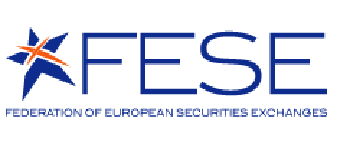
Deirdre Somers re‐elected as FESE Vice President.
On 29th November 2012, the General Assembly of the Federation of European Securities Exchanges (FESE) unanimously approved to renew the appointment of Hans‐Ole Jochumsen, Executive Vice President of the NASDAQ OMX Group as well as President of NASDAQ OMX Nordic and responsible for NASDAQ OMX Global Data Products, as the FESE President for one year. The Board also unanimously renewed the appointment of Deirdre Somers, CEO of the Irish Stock Exchange as Vice President of FESE for an additional year.
FESE President Mr Hans‐Ole Jochumsen said:
“I thank FESE Members for their confidence. It is an honour to lead our industry at such a critical juncture. We are in the middle of fundamental reforms on both sides of the Atlantic which will have a transforming impact on our members. We support the regulatory work being done in Europe and we will continue to engage constructively with our key stakeholders including the European Commission, the European Parliament and the Council. Going forward, we will also focus increasingly on the growth agenda. Regulated Markets are at the heart of our equity markets. Exchanges can do much to support market‐led growth in Europe. This issue will be on the top of FESE’s agenda going forward”.
FESE Vice‐President Ms Deirdre Somers said:
“I am delighted that our members have asked me to stay on as FESEs Vice‐President for an additional year. Our industry is facing critical challenges going forward and the work of FESE will be instrumental in shaping our regulatory future. Exchanges play a fundamental role in our national economies. Exchanges uniquely contribute to our economy by helping companies raise capital. During the next year, our focus will be on how exchanges can help foster economic growth and stability. I look forward to working with FESE and its Members over the coming year as well as continuing the excellent cooperation with Hans‐ Ole Jochumsen”.
About the Editor:
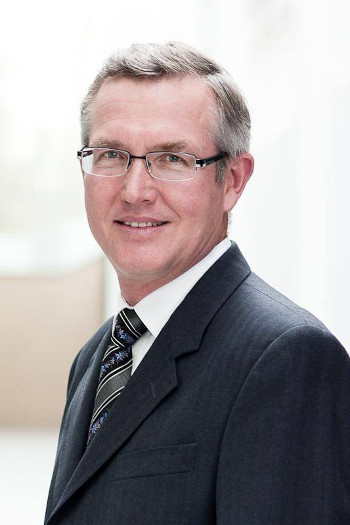 Hans Ole JochumsenAbout Hans‐Ole Jochumsen, President NASDAQ OMX Nordic and Executive Vice President NASDAQ OMX
Hans Ole JochumsenAbout Hans‐Ole Jochumsen, President NASDAQ OMX Nordic and Executive Vice President NASDAQ OMX
Hans‐Ole Jochumsen is Executive Vice President of the NASDAQ OMX Group, heading up the Transaction Services Nordic business area. Transaction Services Nordics is an integrated marketplace of seven independent Nordic and Baltic exchanges, offering trading in Nordic and Baltic equities, commodities and fixed income products. In addition, Mr Jochumsen is the executive responsible for NASDAQ OMX’s Global Data Products business area, which creates innovative real‐time and historical data products.
Prior to the merger between NASDAQ and OMX, Jochumsen served as President and member of the OMX Executive Team. Hans‐Ole Jochumsen has played a key role in the strategic development of OMX and the business area Information Services & New Markets in particular. During Jochumsen's tenure, OMX has successfully launched the Nordic Market Data offering, bringing the market data distribution from seven different Nordic and Baltic marketplaces into one source. Jochumsen has also led the launch of the news distribution service and significant developments on the Baltic markets.
Previously, Jochumsen served as President and CEO of Copenhagen Stock Exchange and FUTOP Clearingcentralen Ltd. He was at the helm of the Copenhagen Stock Exchange during its exceptional turnaround from 1998‐2006. He also spearheaded the merger of the Copenhagen and Stockholm exchanges.
From 1990 to 1998 Jochumsen served as member of the Manangement Board of the following Danish financial institutions; BRFkredit, GiroBank and BG Bank. The latter being the third largest bank in Denmark.
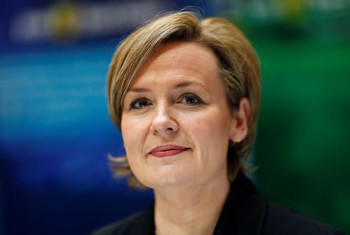 Deirdre SomersAbout Deirdre Somers, CEO, Irish Stock Exchange
Deirdre SomersAbout Deirdre Somers, CEO, Irish Stock Exchange
Deirdre has been Chief Executive of the Irish Stock Exchange (“ISE”) since June 2007. With the ISE since 1995, Deirdre was instrumental in establishing the ISE’s leading position in international primary markets through the listing of international investment funds and fixed income instruments. As Director of Listing in the ISE, as well as being responsible for the main equity market, Deirdre oversaw the establishment a number of specialist markets, in particular the ESM, the ISE’s enterprise market which focuses on growth companies. She is outspoken about the importance of the role of markets as a relevant and accessible funding source for issuers, particularly for high potential SME companies.
A Fellow of Chartered Accountants Ireland, Deirdre is Vice‐President of the European Federation of Securities Exchanges, where she chairs FESE’s Strategy subgroup. She is a member of the IFSC Clearing House Group, which co‐ordinates the development of the international financial services sector in Ireland. She also sits on the National Council of IBEC, which represents the interests of business in Ireland.
About FESE
The Federation of European Securities Exchanges (FESE) represents 46 exchanges in equities, bonds, derivatives and commodities through 21 full members from 30 countries, as well as 4 Observer Members. FESE is a keen defender of the Internal Market and many of its members have become multi‐jurisdictional exchanges, providing market access across multiple investor communities. FESE represents public Regulated Markets. Regulated Markets provide both institutional and retail investors with transparent and neutral price‐formation. Securities admitted to trading on our markets have to comply with stringent initial and ongoing disclosure requirements and accounting and auditing standards imposed by EU laws.
As of October 2012, FESE members had up to 9,026 companies listed on their markets, of which 8% are foreign companies contributing towards the European integration and providing broad and liquid access to Europe’s capital markets. Many of our members also organise specialised markets that allow small and medium sized companies across Europe to access the capital markets; 1,428 companies were listed in these specialised markets/segments in equity, increasing choice for investors and issuers.
For further information:
FESE Secretariat Tracey Roberts Communications Adviser Tel: +32 2 551 01 87 Email: This email address is being protected from spambots. You need JavaScript enabled to view it." mce_' + path + '\'' + prefix + ':' + addy28405 + '\'>'+addy_text28405+'<\/a>';
//-->
| NASDAQ OMX Javier Lopez Garrido Communications Manager Tel: +45 33 77 04 30 Email: This email address is being protected from spambots. You need JavaScript enabled to view it." mce_' + path + '\'' + prefix + ':' + addy74321 + '\'>'+addy_text74321+'<\/a>';
//-->
| Irish Stock Exchange Ailish Byrne Head of Public Affairs and Communications Tel: +353 1 617 42 66 Email: This email address is being protected from spambots. You need JavaScript enabled to view it." mce_' + path + '\'' + prefix + ':' + addy76800 + '\'>'+addy_text76800+'<\/a>';
//-->
|
FESE Press Release Brussels, 5th December 2012
- Details
- Written by Administrator
- Parent Category: Business and Finance
- Category: World Stock Market
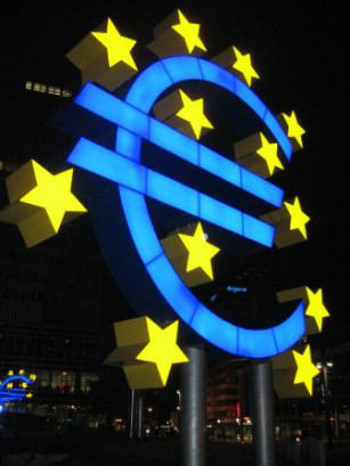 The European Central Bank (ECB) has kept rates at 1 per cent despite growing concern about creeping inflation in Germany and high consumer prices throughout the euro zone. Add the impact of pumping €1 trillion of ECB liquidity into Europe’s banks and some analysts predict its president, Mario Draghi, will have to reverse last years cuts earlier than anticipated.
The European Central Bank (ECB) has kept rates at 1 per cent despite growing concern about creeping inflation in Germany and high consumer prices throughout the euro zone. Add the impact of pumping €1 trillion of ECB liquidity into Europe’s banks and some analysts predict its president, Mario Draghi, will have to reverse last years cuts earlier than anticipated.
The euro zone inflation figure for March was 2.6 per cent – higher than expected and primarily driven by higher oil prices. But since most of Europe’s recovery is export led, any increase could cause damage given that the ECB rate outpaces that in the UK, Japan, and the US.
A key deciding factor, however, will be Germany which historically is fixated on controlling inflation. If the Bundesbank believes inflation is a threat to price stability it may push for rates rise sooner rather than later.
Some observers think pressure now needs to be put on Germany to reign in its over stimulated economy through fiscal measures before any decision is taken on rates in general.
A move up would be a disaster for countries like Ireland – but then we are not the powerhouse of Europe. In fact at this stage it would appear that we don’t even count any more!
Copyright © 2012, DPNLIVE – All Rights Reserved
- Details
- Written by Administrator
- Parent Category: Business and Finance
- Category: World Stock Market
First day trading 2012
UK
 The UK FTSE ended up 2.3 per cent to close at its highest level since the end of October last year as it played catch-up on the gains made elsewhere on Monday when the London markets were closed for the New Year bank holiday. It appeared that strong positive economic data coming out of China, Germany and the US encouraged investors to put aside fears over the debt crisis in the eurozone.
The UK FTSE ended up 2.3 per cent to close at its highest level since the end of October last year as it played catch-up on the gains made elsewhere on Monday when the London markets were closed for the New Year bank holiday. It appeared that strong positive economic data coming out of China, Germany and the US encouraged investors to put aside fears over the debt crisis in the eurozone.
Mining stocks contributed more than a third of the gains on the FTSE 100 based on strong manufacturing figures in China and the US.
For a change banks were back in favour for the day as investors bought into riskier assets on the upbeat news.
The best performing bank was Barclays rising 5.8 per cent.
US
Shares on Wall Street rose 2 per cent on the back of data showing US construction spending had surged to an 18-month peak in November while manufacturing activity figures were also reported to have been the best in six months during December.
The Standard and Poor's 500 Index climbed to a two-month high. All 10 of the main industry groups on the index rose except for the utility stocks.
Bank of America, Alcoa, JP Morgan Chase and Caterpillar all rallied more than 3.5 per cent on the Dow Jones Industrial Average which led to gains in 28 of 30 stocks.
Europe
European stocks ended at a five-month closing high with FTSEurofirst 300 index of top European shares rising 1.6 per cent, its highest close since last August. The main players were BHP Billiton, the world’s biggest mining stock, and rival Rio Tinto which climbed 6.2 per cent and 6.4 per cent respectively.
Meanwhile, Germany’s DAX gained 1.5 per cent spurred on by the auto sector which climbed 3 per cent based on new car registrations which rose 6.1 per cent in December. France’s CAC 40 rose 0.7 per cent.
COMMODITIES
Copper
Copper prices hit a three-week high after the expansion in manufacturing in the US and China boosted hopes for stronger metals demand.
OIL
Oil prices rose more than 3 per cent as tensions increased between Iran and the US. This was based in part on fears of possible supply disruptions due to Tehran’s threats to act if Washington sent a naval carrier to the Persian Gulf. The strait between Iran and Oman at the mouth of the gulf accounts for nearly 40 per cent of oil consumed globally.
Copyright © 2011, DPNLIVE – All Rights Reserved
Artisan Ireland
The Sweetest Thing
The Sweetest Thing. By Tom Byrne.Scratch the surface of Irish industry and you will find…Donegal’s Liquid Gold – Pure Rapeseed Oil
Donegal’s Liquid Gold – Pure Rapeseed Oil The healthy cooking oil favoured by Celebrity…A simply rural life at Waterfall Farm
by Hannah Bolger People are keen to connect with where their food is coming from…Tastefully Yours
Artisan producers of a delightful range of handmade chutneys, preserves, and…MILEEVEN Bees--Sarah's Honey
Mileeven Fine Foods was established in 1988 by my mum, Eilis Gough from her hobby of…Glebe Brethan Farmhouse Cheese
by David Tiernan In 1987 we won supplier of the Year Award from Drogheda and Dundalk…Graham Roberts - Connemara Smokehouse
My name is Graham Roberts and I live and work in a small fishing village, Aillebrack near…CIARA’S PANTRY: It's a Family Affair
By Ellen Neumann13th April 2012 Ciara O’Dowd grew up in the hospitality industry. Her…
















